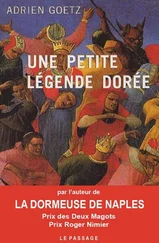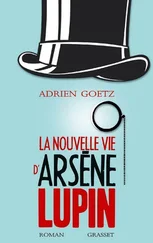
Like many Americans, Kay lost just about everything during the Wall Street crash of 1929. A salesman in New York once more, he became interested in the early work of the Disney studios. Walt Disney had been on a train between New York and Los Angeles a year earlier when he had imagined a mouse with big ears, first known as “Mortimer Mouse,” later to become “Mickey Mouse.” The studio’s iconic character would make his first public appearance, together with Minnie Mouse and Black Pete, at the Colony Theater on Broadway on November 18, 1928, at the premiere of Steamboat Willie , the first animated film with synchronized sound. Seven minutes, during which the rodent lifts Minnie on board by the seat of her trousers using a crane, swings a cat by the tail, strangles a goose, and transforms three little piglets attached to their mother’s teats into an ingenious piano. New characters would follow, first Pluto the Pup, then Donald Duck. Mickey Mouse was exported, becoming Topolino in Italy and Miki Kuchi in Japan. Technicolor would revolutionize the world of animation, and Walt secured exclusive rights to the process for two years. In 1932, his Silly Symphonies short Flowers and Trees won the Oscar for Best Animated Short, and Walt won an honorary Oscar for creating Mickey Mouse. From then on, although it continued to operate in the red, the studio towered as the symbol of the burgeoning entertainment industry. The sale of products derived from the company was still in its infancy. Kay Kamen’s arrival would lead to the explosive growth of merchandizing and transform the studio into an empire.
In July 1932, when Kamen forced his way past the Disney brothers’ door, he played his last card. A hand of double or nothing. The biggest bluff of his career, an insane contract: the studio would receive a guaranteed income of fifty thousand dollars a year that would cost Disney not a cent, in return for which Kamen would get half of any hypothetical future profits from merchandizing. An offer they couldn’t refuse. To pull it off, Kamen had cashed in his life insurance and mortgaged his house. Once he had his ante, he hopped on the first train to Hollywood without buying a ticket. For four days he sat on the train and rehearsed his argument, with ample time to imagine his listeners’ reactions, shore up his position, and invent a confidence for himself that would convince the brothers to sign on. That it was sure to be financially successful in no way changed the fact that the whole business was based on chance. He knew it. And made every effort to hide the anxiety that flooded him. The contracts had been solidly prepared beforehand, with the studio insured against any and all risk, in return for exclusive rights to license Disney-derived products. Without an appointment, he cooled his heels for several days in the reception area before the doors magically opened. Kay entered the Disney brothers’ office on July 1, his future in his attaché case, all staked on a pair of signatures. After the usual formalities, he traded on surprise and, while describing his project, produced the contract and the fifty thousand dollars in cash. A few minutes later, the three men signed and drank a toast to their partnership.
Having obtained exclusive rights, the Kay Kamen Company sorted through the existing licensing agreements and started in earnest to market products relating to the studio. The gamble was a good one, since, as of Christmas 1932, Kay Kamen was able to pay his astonished partners $2.5 million in licensing royalties and, by the terms of the contract, pocket the same sum himself. A brilliant success, owed to the launch that August of Mickey Mouse ice cream cones. By the end of the summer, ten million cones had been sold. The brazen bluff proved a gold-plated masterstroke, and Citizen Kay was off and running. That same summer, while gawkers licked their ice creams, a great fire at the corner of Boardwalk and Surf Avenues devastated Coney Island. Clustered on the beach, thousands of vacationers silently watched the blaze that kids scratching matches had set off.
The man Walt Disney was starting to call “MicKay Kamen” was not about to stop in mid-stride. In 1933, at his urging, Mickey Mouse Magazine began publication. The monthly, supported by dairy producers, was distributed in movie theaters and department stores, generating an unexpected windfall of publicity. Kamen made use of every opportunity, and although the Great Depression made millions of Americans homeless, he dreamed up the most profitable commercial project in the studio’s history: the Mickey Mouse watch. The businessman drew the initial sketch for the prototype himself. The mouse painted at the center of the dial would tell the time with his big, gloved hands, the minutes and seconds intersecting, in effect animating the character. Three small mice at Mickey’s feet would serve as a stopwatch. The idea was sold to the Ingersoll-Waterbury Clock Company, an organization that had been hit hard by the financial crisis and was, in 1933, on the brink of bankruptcy. The Mickey Mouse watch saved the company. Its success was unprecedented. In its first year of production, eleven thousand watches were sold at Macy’s department store in New York City. By 1935, 2.5 million Mickey Mouse watches had been manufactured, and Ingersoll paid Disney nearly $250,000 in royalties. Kamen, strapping a watch to the wrist of millions of American children, was responding in his own way to Herbert Hoover’s promise to put a chicken in every pot. And with his licensing system, he specialized in saving companies from bankruptcy. A windup Disney train toy, offered for a dollar from railroad maintenance cars, helped set the Lionel Corporation back on its feet. Catalogs issued by the businessman during the holiday season also contributed to the exponential growth of Disney products. The merchandizing campaigns Kamen dreamed up got results, even promoting the studio’s cartoon characters. His Three Little Pigs and Big Bad Wolf puppets, for instance, were the best-selling toys of 1934. The Kay Kamen Company was growing, and Kamen was extending his reach. Seizing on the worldwide success of Snow White , he had his catalog translated into nineteen languages. A modest investment, considering the profits generated a few months later by the sale of licensing agreements abroad. At the release of each new feature, the same commercial strategy was deployed: sweets, dolls, clothing, and toys based on the characters filled the pages of the sales catalog. In 1938, royalties for the dwarf Dopey alone generated hundreds of thousands of dollars.

Only World War II slowed Disney’s rising power. The company built on its popularity by taking part in the war effort. On July 14, 1942, the studios — in collaboration with Lockheed Aircraft (the company that would build the Constellation) — released a cartoon on techniques for riveting airplanes, an instruction manual in the form of a short animated film, Four Methods of Flush Riveting , aimed at the government’s civilian contractors. Animators who had been drafted into the armed services made cartoons for military use throughout the war — on subjects from small-arms handling to military strategy — as well as propaganda films, with titles like Der Fuehrer’s Face and Victory Through Air Power . Disney’s enlistment in the war effort came about by chance, an odd fate for a studio whose releases were highly prized by the Axis dictators: Didn’t Hitler consider Snow White a masterpiece? Had he not drawn admiring copies of the seven dwarves and Pinocchio? And didn’t Mussolini invite Walt Disney to the Villa Torlonia in 1935 to discuss The Three Little Pigs and Mickey Mouse?
Читать дальше













